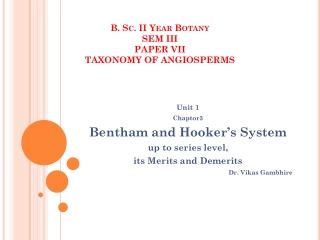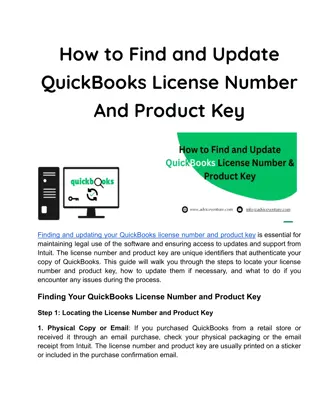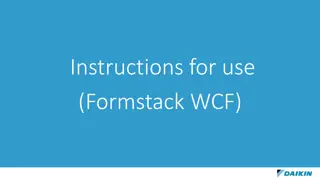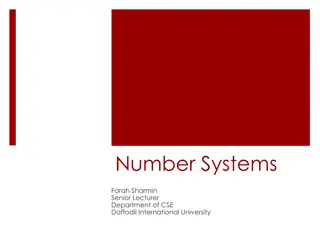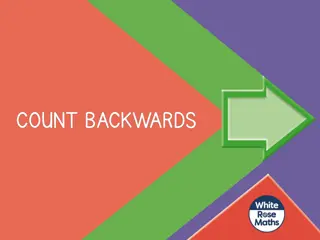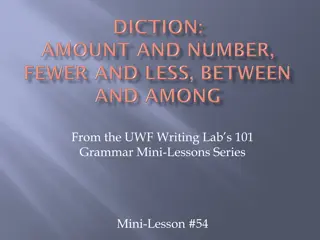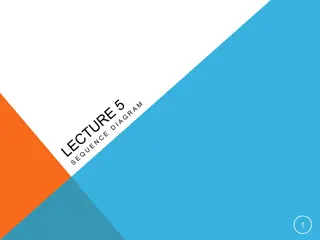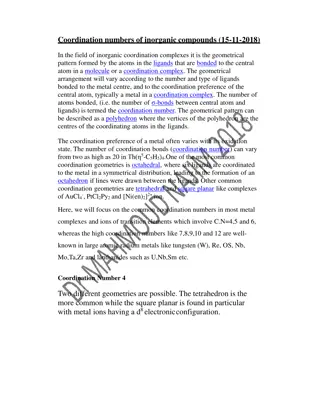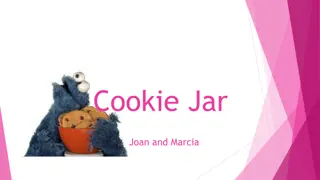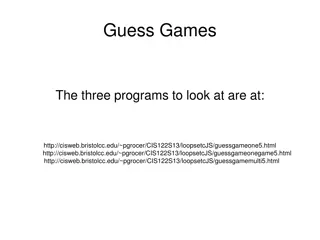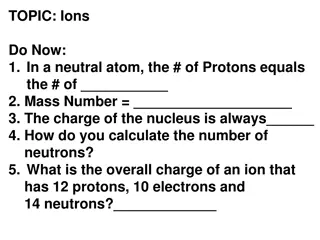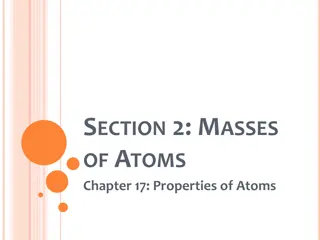
Introduction to Switching Theory and Logic Design Fundamentals
Explore the basics of switching theory and logic design, covering number systems, Boolean algebra, gate level minimization, combinational and sequential logic circuits, and programmable devices. Understand the significance and applications of these fundamental concepts in digital systems. Conversion among different number bases is also discussed with examples.
Download Presentation

Please find below an Image/Link to download the presentation.
The content on the website is provided AS IS for your information and personal use only. It may not be sold, licensed, or shared on other websites without obtaining consent from the author. If you encounter any issues during the download, it is possible that the publisher has removed the file from their server.
You are allowed to download the files provided on this website for personal or commercial use, subject to the condition that they are used lawfully. All files are the property of their respective owners.
The content on the website is provided AS IS for your information and personal use only. It may not be sold, licensed, or shared on other websites without obtaining consent from the author.
E N D
Presentation Transcript
STLD Kohavi Morris Mano S:Switching A.P. Godse D.A. Godse T:Theory L:Logic D:Design Switching Theory & Logic Design
Introduction to the Subject &Need of the Subject. Subject contains Unit-1: Number System & Boolean Algebra. Unit-2: Gate Level Minimization. Unit-3: Combinational Logic Circuits Unit-4: Sequential Logic Circuits Unit-5: Programmable Devices
Unit-1 Number System & Boolean Algebra. Number System Boolean Algebra.
Number System : Number base conversions, Complements of numbers, Signed binary numbers, Binary codes. Boolean algebra: Boolean Algebra-Basic definition, Basic theorems and properties, Boolean Functions, Canonical & Standard forms, other logic operations & Logic gates. Digital Systems, Binary Numbers,
Number System Def: Number system is a basic for counting Various items Types of Number System Decimal Number System Binary Number System Octal Number System Hexa-decimal Number System
Types of Number System Used by humans? Used in computers? System Base Symbols Decimal 10 Yes No 0, 1, 9 Binary 2 0, 1 No Yes Octal 8 No No 0, 1, 7 Hexa- decimal 16 No No 0, 1, 9, A, B, F
Quantities/Counting (1 of 2) Hexa- decimal Decimal Binary Octal 0 0000 0 0 1 0001 1 1 2 0010 2 2 3 0011 3 3 4 0100 4 4 5 0101 5 5 6 0110 6 6 7 0111 7 7
Quantities/Counting (2 of 2) Hexa- decimal Decimal Binary Octal 8 1000 10 8 9 1001 11 9 10 1010 12 A 11 1011 13 B 12 1100 14 C 13 1101 15 D 14 1110 16 E 15 1111 17 F
Conversion Among Bases Conversion Among Bases The possibilities: Decimal Octal Binary Hexadecimal
Quick Example Convert 2510 in to Base2,Base8 &Base16.
Binary to Decimal Decimal Octal Binary Hexadecimal
Binary to Decimal Technique Multiply each bit by 2n, where n is the weight of the bit The weight is the position of the bit, starting from 0 on the right Add the results
Example Bit 0 1010112 => 1 x 20 = 1 1 x 21 = 2 0 x 22 = 0 1 x 23 = 8 0 x 24 = 1 x 25 = 32 0 4310
Example 1000102to Base 10 1000102 => 0 x 20 = 0 1 x 21 = 2 0 x 22 = 0 0 x 23 = 0 0 x 24 = 0 1 x 25 = 32 3410
Example Binary to decimal 1 x 2-4 = 0.0625 1 x 2-3 = 0.125 0 x 2-2 = 0.0 1 x 2-1 = 0.5 0 x 20 = 0.0 1 x 21 = 2.0 10.1011 => 2.6875
Octal to Decimal Octal Decimal Binary Hexadecimal
Octal to Decimal Technique Multiply each bit by 8n, where n is the weight of the bit The weight is the position of the bit, starting from 0 on the right Add the results
Example 7248 => 4 x 80 = 4 2 x 81 = 16 7 x 82 = 448 46810
Example 4328 To Base 10 2 x 80 = 2 3 x 81 = 24 4 x 82 = 256 28210
Hexadecimal to Decimal Decimal Octal Hexadecimal Binary
Hexadecimal to Decimal Technique Multiply each bit by 16n, where n is the weight of the bit The weight is the position of the bit, starting from 0 on the right Add the results
Example C x 160 =12 x1 = 12 B x 161 =11x16 = 176 A x 162=10x256 = 2560 ABC16 => 274810
Example A5D16 to Base 10 D x 160 =13 x1 = 13 5 x 161 = 5x16 = 80 A x 162=10x256 = 2560 265310
Decimal to Binary Decimal Octal Binary Hexadecimal
Conversion of Decimal number to any Radix number. Successive division for integer part conversion Successive multiplication for fractional part conversion
Decimal to Binary Technique Divide by two, keep track of the remainder First remainder is bit 0 (LSB, least- significant bit) Second remainder is bit 1 Etc.
Example 2 125 62 1 2 31 0 2 15 1 2 7 1 2 3 1 2 1 1 2 0 1 12510 = ?2 12510 = 11111012
Example Decimal to binary .14579 x 2 0.29158 x 2 0.58316 x 2 1.16632 x 2 0.33264 x 2 0.66528 x 2 1.33056 3.14579 11.001001... etc.
Decimal to Octal Decimal Octal Binary Hexadecimal
Decimal to Octal Technique Divide by 8 Keep track of the remainder
Example 123410 = ?8 8 1234 154 2 8 19 2 8 2 3 8 0 2 123410 = 23228
Example Convert 658.82510 = ?8 658.82510 =1222.6468
Decimal to Hexadecimal Decimal Octal Binary Hexadecimal
Decimal to Hexadecimal Technique Divide by 16 Keep track of the remainder
Example 123410 = ?16 16 1234 77 2 16 4 13 = D 16 0 4 123410 = 4D216
Example 5386.34510 = ?16 5386.34510 =150A.58516
Octal to Binary Octal Decimal Binary Hexadecimal
Octal to Binary Technique Convert each octal digit to a 3-bit equivalent binary representation
Example 7058 = ?2 7 0 5 111 000 101 7058 = 1110001012
Example 2148 = ?2 2 1 4 010 001 100 2148 = 0100011002
Hexadecimal to Binary Decimal Octal Binary Hexadecimal
Hexadecimal to Binary Technique Convert each hexadecimal digit to a 4-bit equivalent binary representation
Example 10AF16 = ?2 1 0 A F 0001 0000 1010 1111 10AF16 = 00010000101011112
Example 3A9E.B0D16 = ?2 3 A 9 E . B 0 D 0011 1010 1001 1110 . 1011 0000 1101 3A9E.B0D16 = 0011101010011110.1011000011012
Binary to Octal Decimal Octal Binary Hexadecimal
Binary to Octal Technique Group bits in threes, starting on right Convert to octal digits
Example 10110101112 = ?8 1 011 010 111 1 3 2 7 10110101112 = 13278
a) 110101.1010102 = ?8 110101.1010102 =65.528 b) 10101111001.01112 = ?8 10101111001.01112 =2571.348
Binary to Hexadecimal Decimal Octal Binary Hexadecimal
Binary to Hexadecimal Technique Group bits in fours, starting on right Convert to hexadecimal digits

